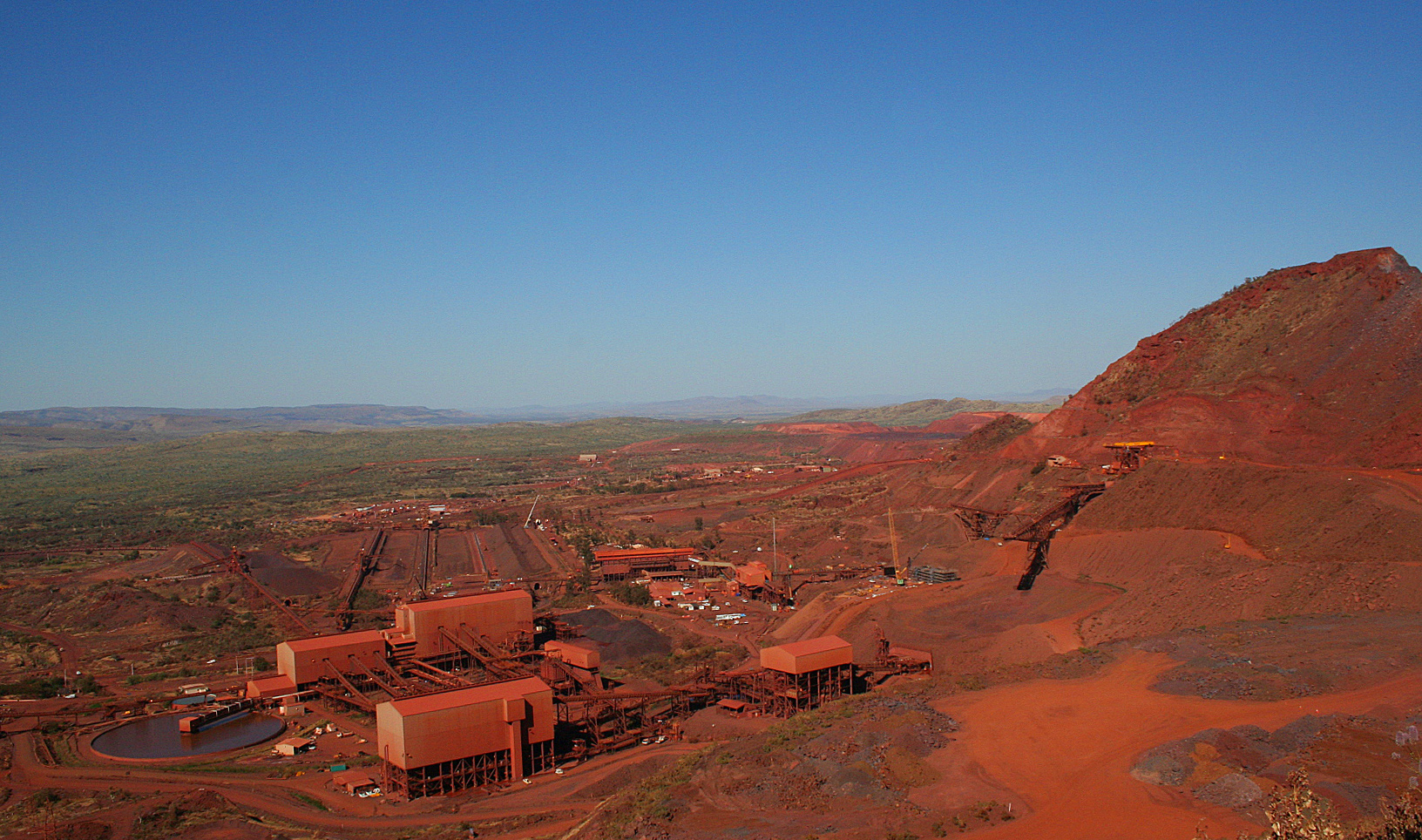Pilbara Mining Debate: Rio Tinto's Response To Andrew Forrest's Concerns

Table of Contents
Andrew Forrest's Key Concerns Regarding Pilbara Mining Practices
Andrew Forrest's concerns regarding Rio Tinto's Pilbara operations are multifaceted, encompassing significant environmental impacts, concerns over Indigenous land rights, and a broader vision for the future of the region's mining industry.
Environmental Impact
Forrest's criticisms heavily focus on the environmental damage allegedly caused by Rio Tinto's mining activities. He points to:
- Deforestation: Large-scale clearing of native vegetation for mining operations, leading to habitat loss and biodiversity reduction. Specific projects cited often include those related to expanding iron ore production.
- Water Usage: Excessive water consumption by Rio Tinto's operations in a region already facing water scarcity, impacting local ecosystems and potentially impacting Indigenous communities reliant on these water sources. Detailed data on water usage per tonne of ore produced is often demanded.
- Carbon Emissions: Significant greenhouse gas emissions from Rio Tinto's mining activities, contributing to climate change and its associated risks to the Pilbara environment. Forrest frequently calls for more aggressive decarbonization targets.
Indigenous Land Rights and Stakeholder Engagement
A central aspect of Forrest's concerns involves the treatment of Indigenous communities and their involvement in decisions affecting their ancestral lands. He argues for:
- Meaningful Consultation: Improved consultation and engagement processes to ensure Indigenous voices are heard and respected in decision-making regarding mining projects on their traditional lands. Specific instances of alleged insufficient consultation are often brought forward.
- Benefit Sharing: A more equitable distribution of benefits derived from mining activities, ensuring Indigenous communities receive fair compensation and opportunities for economic participation. This often relates to royalties and local business opportunities.
- Respect for Cultural Heritage: Greater protection of Indigenous cultural heritage sites potentially impacted by mining operations. This involves calls for more thorough archaeological assessments and mitigation strategies.
Future of Pilbara Mining and Sustainability
Forrest envisions a more sustainable future for Pilbara mining, one that prioritizes environmental protection, Indigenous rights, and long-term economic viability. This vision contrasts sharply with what he perceives as Rio Tinto's approach, leading to calls for:
- Renewable Energy Transition: A rapid shift towards renewable energy sources to power mining operations, significantly reducing carbon emissions.
- Resource Efficiency: Improved resource efficiency measures to minimize waste and environmental impact. This includes calls for better recycling and waste management practices.
- Community Ownership Models: Exploring alternative models of mining that incorporate greater community ownership and control, empowering local communities.
Rio Tinto's Rebuttal and Defense of its Pilbara Operations
Rio Tinto counters Forrest's criticisms by highlighting its environmental stewardship initiatives, Indigenous partnerships, and the significant economic contributions its operations make to the Pilbara region.
Environmental Stewardship Initiatives
Rio Tinto emphasizes its commitment to environmental sustainability through various programs and initiatives:
- Emissions Reduction Targets: Ambitious targets for reducing greenhouse gas emissions, often supported by detailed plans and investments in carbon capture technologies.
- Water Management Strategies: Implementation of water-efficient technologies and strategies to minimize water consumption in its operations. Data on water recycling and reuse is frequently presented.
- Rehabilitation Programs: Extensive mine rehabilitation programs to restore mined areas and minimize the long-term environmental impacts of mining activities.
Indigenous Partnerships and Community Engagement
Rio Tinto highlights its efforts to foster strong relationships with Indigenous communities:
- Indigenous Employment: Significant investment in Indigenous employment and training programs to create opportunities for local communities. Specific figures on Indigenous workforce participation are often cited.
- Community Investment: Funding of community development projects and initiatives aimed at improving the lives of Indigenous people in the Pilbara.
- Joint Ventures: Collaborative ventures with Indigenous communities to ensure mutual benefit and shared decision-making.
Economic Contributions and Regional Development
Rio Tinto emphasizes its significant economic contribution to the Pilbara region:
- Job Creation: Providing thousands of direct and indirect jobs, contributing significantly to regional employment.
- Infrastructure Development: Investment in regional infrastructure, including roads, railways, and other essential services.
- Royalties and Taxes: Significant contributions to government revenue through royalties and taxes.
Analyzing the Disagreement: Finding Common Ground and Future Directions
Despite the strong disagreements, there's potential for constructive dialogue and collaboration between Rio Tinto and Andrew Forrest.
Areas of Potential Collaboration
Areas of potential collaboration include developing more stringent environmental standards, enhancing Indigenous participation in decision-making, and exploring innovative sustainable mining practices.
The Role of Government Regulation
Government regulation plays a critical role in ensuring responsible mining practices, enforcing environmental standards, and protecting Indigenous rights. Stronger regulations and more robust enforcement mechanisms are crucial.
The Path Towards Sustainable Pilbara Mining
The future of Pilbara mining hinges on a commitment to sustainability, encompassing environmental stewardship, Indigenous rights, and economic prosperity. Open dialogue, collaboration, and robust government regulation are essential to navigate the challenges and achieve a more sustainable and equitable outcome.
Conclusion: Resolving the Pilbara Mining Debate
The Pilbara mining debate highlights the complex interplay between economic development, environmental protection, and Indigenous rights. Andrew Forrest's concerns regarding Rio Tinto's operations, focusing on environmental impact, Indigenous land rights, and the future of sustainable mining, have sparked a critical discussion. Rio Tinto's rebuttal emphasizes its commitment to environmental stewardship, Indigenous partnerships, and economic contributions. Moving forward, finding common ground through collaboration, strengthened government regulation, and a shared commitment to sustainable practices is crucial for ensuring a responsible and prosperous future for the Pilbara mining industry. Stay informed about the ongoing Pilbara mining debate and voice your opinion on how to balance economic development with environmental protection and Indigenous rights. [Link to relevant resource/organization].

Featured Posts
-
 Crack The Code 5 Dos And Don Ts For Private Credit Job Seekers
May 23, 2025
Crack The Code 5 Dos And Don Ts For Private Credit Job Seekers
May 23, 2025 -
 The Jonas Brothers Couples Dispute And Joes Reaction
May 23, 2025
The Jonas Brothers Couples Dispute And Joes Reaction
May 23, 2025 -
 Englands Cook Earns Test Debut Against Zimbabwe
May 23, 2025
Englands Cook Earns Test Debut Against Zimbabwe
May 23, 2025 -
 Stock Market Reaction Tax Bill Bond Yields Bitcoin Price Action
May 23, 2025
Stock Market Reaction Tax Bill Bond Yields Bitcoin Price Action
May 23, 2025 -
 Honeywells 2 4 Billion Acquisition Of Johnson Mattheys Catalyst Technologies A Deep Dive
May 23, 2025
Honeywells 2 4 Billion Acquisition Of Johnson Mattheys Catalyst Technologies A Deep Dive
May 23, 2025
